
A harpsichord is a musical instrument played by means of a keyboard. This activates a row of levers that turn a trigger mechanism that plucks one or more strings with a small plectrum made from quill or plastic. The strings are under tension on a soundboard, which is mounted in a wooden case; the soundboard amplifies the vibrations from the strings so that the listeners can hear it. Like a pipe organ, a harpsichord may have more than one keyboard manual, and even a pedal board. Harpsichords may also have stop buttons which add or remove additional octaves. Some harpsichords may have a buff stop, which brings a strip of buff leather or other material in contact with the strings, muting their sound to simulate the sound of a plucked lute.

Bartolomeo Cristofori di Francesco was an Italian maker of musical instruments famous for inventing the piano.

A clavicytherium is a harpsichord in which the soundboard and strings are mounted vertically facing the player. The primary purpose of making a harpsichord vertical is the same as in the later upright piano, namely to save floor space. In a clavicytherium, the jacks move horizontally without the assistance of gravity, so that clavicytherium actions are more complex than those of other harpsichords.
The Ruckers family were harpsichord and virginal makers from the Southern Netherlands based in Antwerp in the 16th and 17th century. Their influence stretched well into the 18th century, and to the harpsichord revival of the 20th.
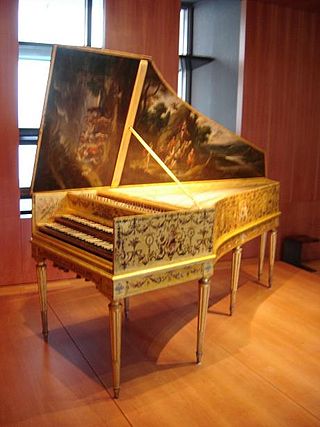
Pascal-Joseph Taskin was a Holy Roman Empire-born French harpsichord and piano maker.
The oval spinet is a type of harpsichord invented in the late 17th century by Bartolomeo Cristofori, the Italian instrument maker who later achieved fame for inventing the piano. The oval spinet was unusual for its shape, the arrangement of its strings, and for its mechanism for changing registration.
Hieronymus Albrecht Hass was a German harpsichord and clavichord maker. He was the father of Johann Adolph Hass, who also made harpsichords and clavichords.
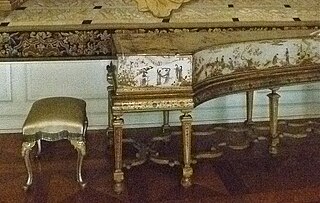
Michael Mietke was a German harpsichord and harp maker.

Christian Vater was a German organ and harpsichord builder.

The harpsichord was an important keyboard instrument in Europe from the 15th through the 18th centuries, and as revived in the 20th, is widely played today.

The spinettone was a kind of harpsichord invented in the late 17th century by Bartolomeo Cristofori, who was later the inventor of the piano. Other names for this instrument were spinettone da teatro, spinetta traversa.
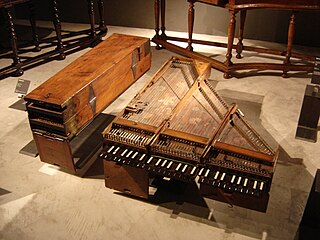
The folding harpsichord was a kind of harpsichord meant for travel. Since it could be folded up into a fairly compact space, it was more easily transported than a conventional harpsichord. The folding took place on hinges and was in the longitudinal dimension, preserving the tension on the strings. The folded instrument formed a package about the size of a large suitcase.

Benoist Stehlin was a French harpsichord builder.
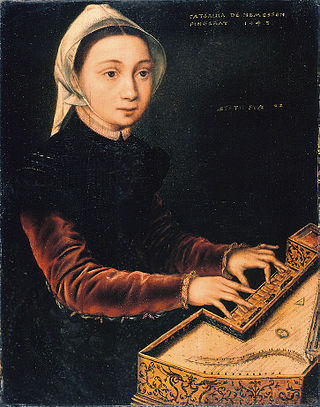
Ioes Karest, also known as Joos Karest, was a Flemish harpsichord builder.
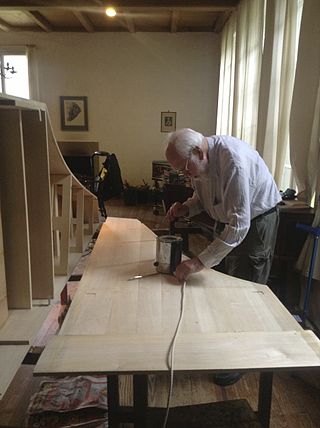
(Franz Hermann) Martin Skowroneck was a German harpsichord builder, one of the pioneers of the modern movement of harpsichord construction on historical principles.

Albert Delin was a harpsichord maker in the Austrian Netherlands.

The Donzelagues were a family of harpsichord makers in southern France in the 17th and 18th centuries.

Girolamo Zenti was an Italian harpsichord maker and organ builder in the 17th century. He is known as the probable inventor of the bentside spinet and for having traveled unusually extensively to practice his trade at the courts of Europe, including Rome, Florence, Paris, London and Stockholm.
The Gräbner family were German harpsichord-, clavichord-, organ- and eventually piano makers from the 17th century to the beginning of the 19th century. They are best known for their harpsichords, which represent a mid-german style of building, distinct from the better known northern style as represented by Hass, Mietke and Zell. The Gräbner family ran the most prominent instrument making workshop in Dresden, and were purveyors of harpsichords and organs to the court of Saxony. J.S. Bach was aquatinted with members of the Gräbner family and Christian Heinrich Gräbner studied organ playing under Bach.

















